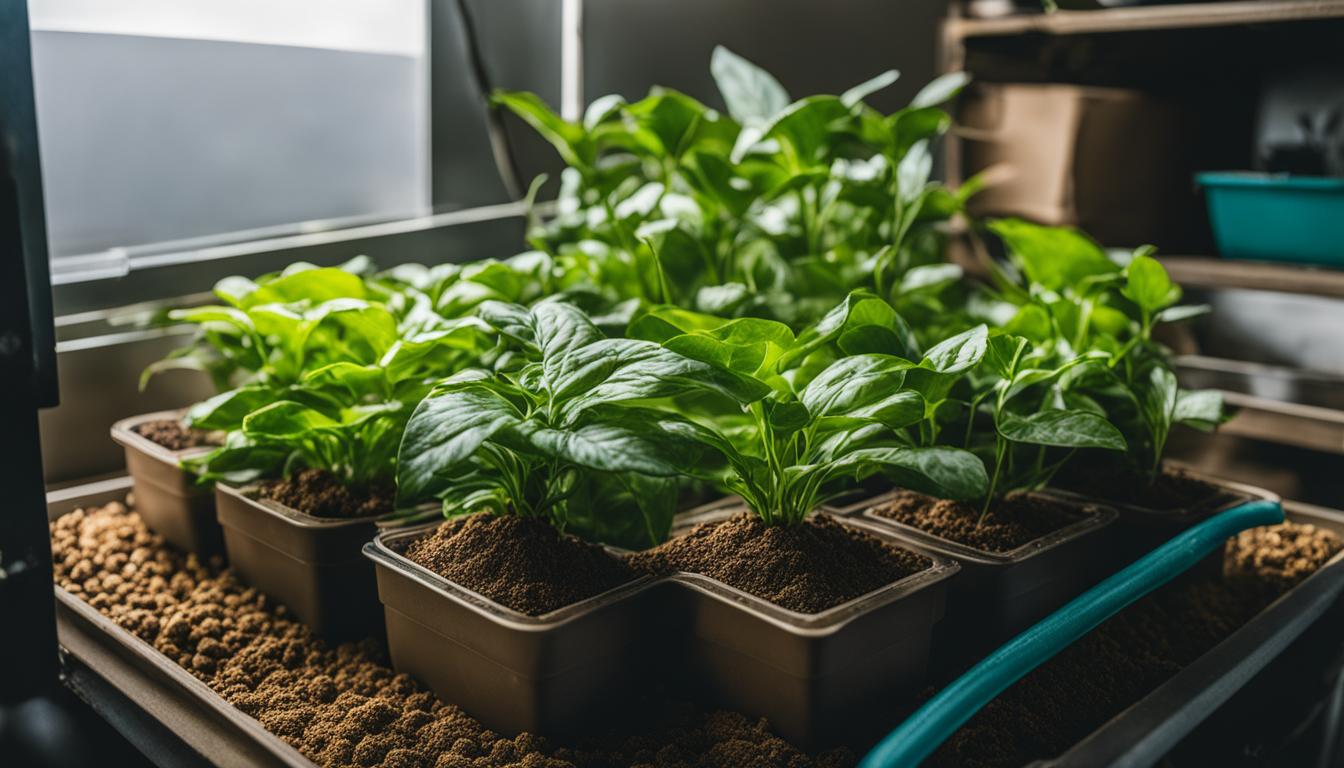
When it comes to hydroponic gardening, choosing the right mediums for your plants is essential. These mediums serve as the foundation for your plants to grow and thrive without soil.
With a wide range of options available, it’s important to understand the different types of hydroponic media and their properties to make the best choices for your garden.
Hydroponic growing mediums come in various forms, each with its own unique characteristics. Some of the most popular options include vermiculite, coconut coir, pea gravel, and more.
These mediums offer different benefits, such as improved water retention, excellent drainage, and proper aeration for the plants’ root systems. Understanding the properties of each medium and how they can affect plant growth is crucial in creating a successful hydroponic garden.
Key Takeaways:
- Choosing the right hydroponic medium is crucial for the success of your plants.
- Popular hydroponic mediums include vermiculite, coconut coir, and pea gravel.
- Each medium has unique properties that can impact plant growth and maintenance.
- Consider factors such as water retention, drainage, and aeration when selecting a hydroponic medium.
- Experimenting with different mediums can help you find the best option for your specific plants and gardening goals.
Oasis Cubes – A Versatile Hydroponic Medium
When it comes to hydroponic gardening, Oasis Cubes are a popular choice for many growers. These individual cubes offer a versatile and easy-to-use hydroponic medium for a range of plants.
Filled with an inert medium such as perlite or vermiculite, Oasis Cubes provide a suitable environment for plant growth in a hydroponic garden.
One of the standout features of Oasis Cubes is their versatility. They can be used for various plant species, making them a go-to option for both novice and experienced gardeners.
Whether you’re growing leafy greens, herbs, or even flowering plants, Oasis Cubes provide a stable and nutrient-rich medium that can support healthy growth.
Another advantage of using Oasis Cubes is their low-maintenance nature. Once the cubes are filled with the desired growing medium, they require regular watering to ensure the plants receive the necessary moisture.
It’s important to note that Oasis Cubes lack a drainage system, which means proper care must be taken to prevent root rot and monitor for pests.
In summary, Oasis Cubes offer a versatile and low-maintenance hydroponic medium for your garden. With their ability to accommodate various plant species and their ease of use, they are a popular choice among hydroponic growers. But, you must ensure the appropriate watering and monitoring to prevent any potential issues.
Growstones – A Drainage-Friendly Hydroponic Medium
When it comes to hydroponics, choosing the right growing medium is crucial for the success of your garden. One popular option that stands out for its exceptional drainage properties is Growstones. Made from small clay pellets, Growstones provide an ideal environment for plant roots to thrive.
What sets Growstones apart is their excellent drainage system. The small clay pellets have numerous holes that allow the nutrient solution to flow freely and be recycled, ensuring optimal moisture levels for your plants. This efficient drainage system helps prevent waterlogged roots, which can lead to root rot and other issues.
Another advantage of using Growstones as a hydroponic medium is their moisture retention capabilities. These clay pellets have a natural ability to retain moisture, reducing the need for frequent watering. This makes Growstones particularly suitable for dry climates or systems with limited water availability.
Advantages of using Growstones:
- Excellent drainage properties due to numerous holes in the clay pellets
- Reduced risk of waterlogged roots and root rot
- Natural moisture retention, minimizing the need for frequent watering
- Suitable for dry climates or systems with limited water availability
Disadvantages of using Growstones:
- Relatively high cost compared to other hydroponic media
- May not be suitable for beginners or systems with excessive watering
Overall, Growstones offer a drainage-friendly hydroponic medium that provides optimal moisture levels for your plants. Their ability to retain moisture and prevent waterlogged roots makes them a popular choice among hydroponic gardeners.
It’s important to consider your specific needs and circumstances before choosing Growstones as your preferred hydroponic medium.
Advantages and Disadvantages of using Growstones as a hydroponic medium.
| Advantages | Disadvantages |
|---|---|
| Excellent drainage properties | Relatively high cost |
| Reduced risk of waterlogged roots | May not be suitable for beginners or excessive watering |
| Natural moisture retention | |
| Suitable for dry climates or limited water availability |
Coco Peat – A Natural and Moisture-Retaining Hydroponic Medium

When it comes to hydroponic gardening, finding the right growing medium is crucial for the success of your plants. One popular choice that offers excellent water retention is coco peat. Made from coconut husks, coco peat is a natural and organic option that provides optimal moisture levels for plant growth.
The water retention properties of coco peat mean that you won’t have to water your plants as frequently, making it a low-maintenance option for hydroponic gardening.
This can be especially beneficial if you have a busy schedule or are new to hydroponics. The organic nature of coco peat also means that it contains natural nutrients, reducing the need for additional fertilizers.
It’s important to note that coco peat can pose some challenges. Initially, the dense structure of coco peat may make it difficult for roots to penetrate.
To overcome this, it’s recommended to mix coco peat with other hydroponic media or create small holes for the roots to grow through. Coco peat should be handled with care during harvest to avoid damaging the delicate roots.
Overall, coco peat is a great choice for hydroponic gardening due to its moisture retention properties and organic nature. By providing a stable and nutrient-rich environment for your plants, coco peat can help you achieve successful and thriving hydroponic gardens.
Comparison of Coco Peat with Other Hydroponic Media
| Hydroponic Medium | Water Retention | Organic | Nutrient Content |
|---|---|---|---|
| Coco Peat | Excellent | Yes | Natural nutrients present |
| Growstones | Moderate | No | Requires additional fertilizers |
| Perlite | Poor | No | No nutrients present |
| Peat Moss | Excellent | No | Some natural nutrients present |
| Oasis Cubes | Moderate | No | Requires additional fertilizers |
Peat Moss – An Inert Hydroponic Medium with Excellent Water Retention
When it comes to choosing a hydroponic medium that excels in water retention, peat moss is a top contender. It offers exceptional moisture retention capabilities, creating a stable environment for plant growth. This natural medium is inert, making it suitable for various hydroponic systems.
Peat moss also has the advantage of containing essential nutrients, reducing the need for additional fertilizers. Its ability to hold onto water allows for less frequent watering, making it an attractive option for low-maintenance gardens.
It’s worth noting that peat moss can be challenging for roots to penetrate initially, so careful monitoring is necessary.
“Peat moss is an effective hydroponic medium for water retention and stability. It provides the necessary moisture for plant growth, reducing the risk of waterlogged roots while minimizing the need for constant watering. With its inert nature and nutrient content, peat moss offers convenience and natural benefits for hydroponic gardening.”
Benefits of Peat Moss as a Hydroponic Medium
- Water retention: Peat moss has excellent water retention properties, ensuring a constant supply of moisture for plants without waterlogging.
- Inert nature: Being inert, peat moss does not interfere with the pH balance of the nutrient solution, providing a stable environment for plant growth.
- Natural nutrient content: Peat moss contains essential nutrients that can sustain plants, reducing the need for additional fertilizers and additives.
- Cost-effective: Peat moss is relatively affordable and widely available, making it a cost-effective choice for hydroponic gardening.
It’s important to note that peat moss can be prone to pH changes over time. Therefore, proper monitoring and adjustments may be necessary to maintain optimal pH levels for plant growth.
With its excellent water retention capabilities and natural benefits, peat moss is a valuable hydroponic medium for achieving successful and thriving gardens.
| Benefits | Peat Moss | Other Hydroponic Mediums |
|---|---|---|
| Water Retention | Excellent | Varies |
| pH Stability | Good | Varies |
| Nutrient Content | Yes | Varies |
| Cost-effectiveness | Affordable | Varies |

Perlite – An Airy and pH Neutral Hydroponic Medium
When it comes to hydroponic gardening, choosing the right growing medium is crucial for the success of your plants.
One popular option that offers excellent aeration and pH neutrality is perlite. Made from volcanic rock, perlite expands into small, lightweight spheres when heated. This creates air pockets within the medium, allowing roots to access oxygen easily.
Perlite is pH neutral, which means it won’t affect the acidity or alkalinity of your nutrient solution. This is especially important as it allows you to have better control over the pH levels in your hydroponic system.
Perlite has the ability to retain water while also providing good drainage. It strikes a balance between air and water, ensuring that the roots receive the necessary moisture without becoming waterlogged.
One of the advantages of using perlite as a hydroponic medium is its versatility. It can be used in various hydroponic systems, including deep water culture, nutrient film technique, and ebb and flow systems.
Perlite is also lightweight, making it easy to handle and work with. BUT, be cautious of the dust that perlite can produce, as it can be harmful if inhaled. Always wear a mask and handle it with care.
It’s important to note that perlite doesn’t contain any nutrients on its own. Therefore, it’s essential to add water-soluble fertilizers to provide your plants with the necessary nutrients. By incorporating perlite into your hydroponic setup, you can create an optimal environment for your plants to thrive.
After reading this, check out our other articles on:
- Using Coconut Coir in Potting Mixes for Gardening Success
- Mastering the Art of Adjusting Soil pH with Garden Lime
FAQ
What is the best hydroponic medium for plants?
The best hydroponic medium for plants depends on various factors such as the type of plants being grown and the desired level of maintenance. Some popular options include Oasis Cubes, Growstones, Coco Peat, Peat Moss, and Perlite.
Why are Oasis Cubes favored by gardeners?
Oasis Cubes are favored by gardeners due to their versatility and ease of use. They provide a suitable environment for a wide range of plants and are filled with an inert medium like perlite or vermiculite.
Do Oasis Cubes require regular watering?
Yes, Oasis Cubes require regular watering as they lack a drainage system. Care must be taken to prevent root rot and monitor for pests.
What are Growstones made of?
Growstones are made of small clay pellets. They have excellent drainage holes, allowing the nutrient solution to freely flow and be recycled.
Do Growstones reduce the need for frequent watering?
Yes, Growstones are known for their moisture retention properties, reducing the need for frequent watering. They can be used alone or mixed with other media for optimal plant growth.
What is Coco Peat made from?
Coco Peat is a natural growing medium made from coconut husks. It retains water very well, reducing the need for frequent watering.
Does Coco Peat require additional fertilizers?
No, Coco Peat contains natural nutrients, eliminating the need for additional fertilizers. It is an organic option that offers excellent moisture retention and promotes plant growth.
What is Peat Moss?
Peat Moss is an inert hydroponic medium that offers excellent water retention. It provides a stable environment for plants and helps prevent waterlogged roots.
Does Perlite contain any nutrients?
No, Perlite does not contain any nutrients. It is pH neutral and provides a good balance of air and water throughout the medium.

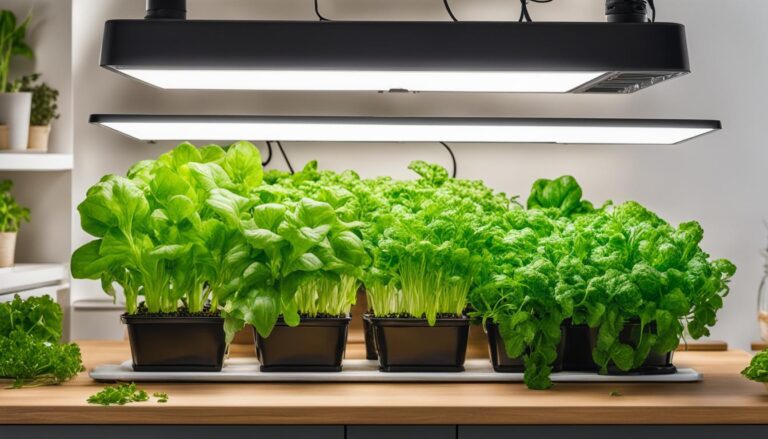
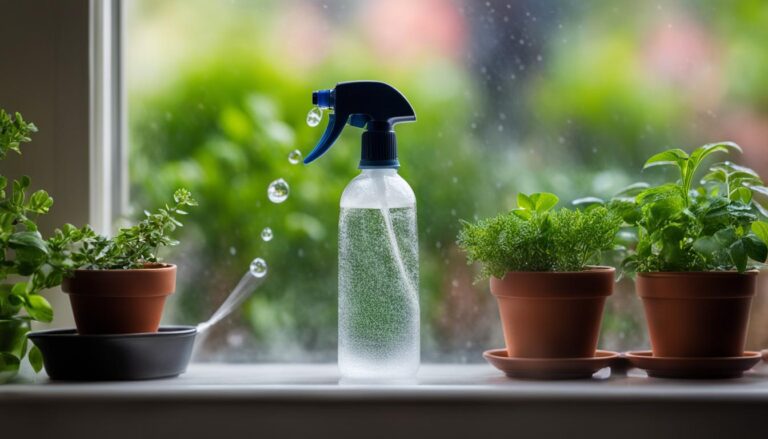

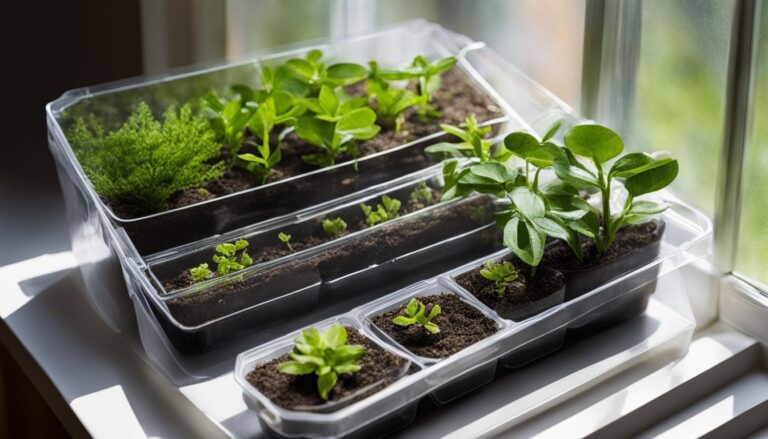

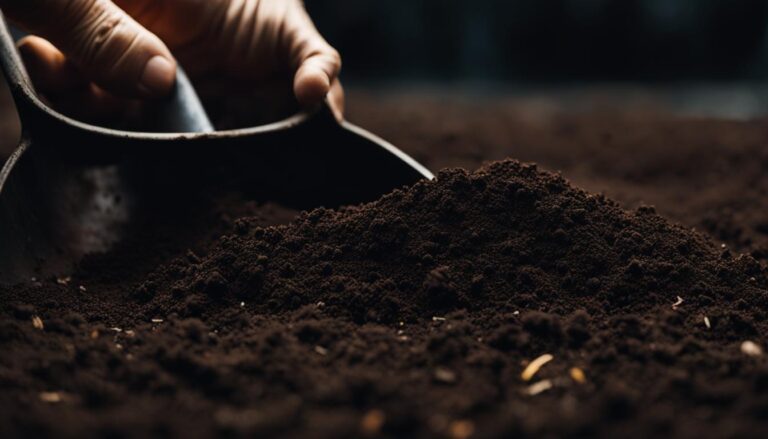
2 Comments
Comments are closed.